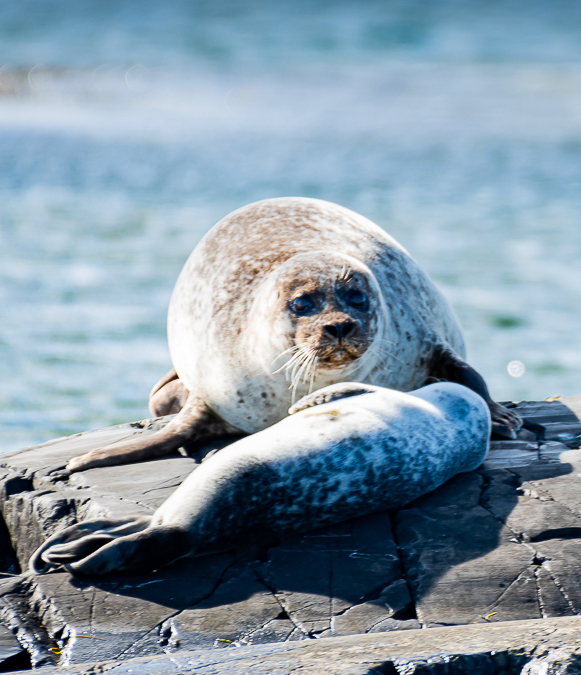Abstract
Detecting changes in population trends depends on the accuracy of estimated mean population growth rates and thus the quality of input data. However, monitoring wildlife populations poses economic and logistic challenges especially in complex and remote habitats. Declines in wildlife populations can remain undetected for years unless effective monitoring techniques are developed, guiding appropriate management actions.
An automated survey workflow was developed using unmanned aerial vehicles (drones) to quantify the number and size of individual animals, using the well-studied Scandinavian harbour seal (Phoca vitulina) as a model species. We compared ground-based counts using telescopes with manual flights, using a zoom photo/video, and pre-programmed flights producing orthomosaic photo maps.
We used machine learning to identify and count both pups and older seals and we present a new method for measuring body size automatically. We then evaluated the population’s reproductive success using drone data, historical counts and predictions from a Leslie matrix population model.
The most accurate and time-efficient results were achieved by performing pre-programmed flights where individual seals are identified by machine learning and their body sizes are measured automatically. The accuracy of the machine learning detector was 95-97% and the classification error was 4.6 ± 2.9 for pups and 3.1 ± 2.1 for older seals was observed during good light conditions.
There was a clear distinction between the body sizes of pups and older seals during breeding time. We estimated 320 pups in the breeding season 2021 with the drone, which is well beyond the expected number of around 500 as estimated from a Leslie matrix. The new high quality data from the drone survey confirms earlier indications of a deteriorating reproductive rate in this important harbour seal colony.
In this study we show that aerial drones and machine learning are powerful tools for monitoring wildlife in inaccessible areas which can be used to assess annual recruitment and seasonal variations in body condition. This improved method yields high-quality data, enabling detection of changes in population growth and somatic size which can provide insight into cause-effect mechanisms behind observed changes in population trends.






